The CN Tower story
Find out more about Canada’s National Tower here—its history, the science behind its construction and some of the records it holds.

Upcoming closures:
The 1960s ushered in an unprecedented construction boom in Toronto, a city quickly growing up from a regional hub to a thriving, cosmopolitan destination. Existing transmission towers were simply not high enough to broadcast radio and television signals over the tall new buildings, which bounced the signals away from their intended audience.
To solve this problem—and to demonstrate the aspirations of Canadian innovation and industry—Canadian National, the Crown corporation that operated the country’s largest railway network, employed more than 1,500 workers for 40 months to build the CN Tower. Once completed, it would be the tallest tower in the world, capable of broadcasting signals far and wide across the region.
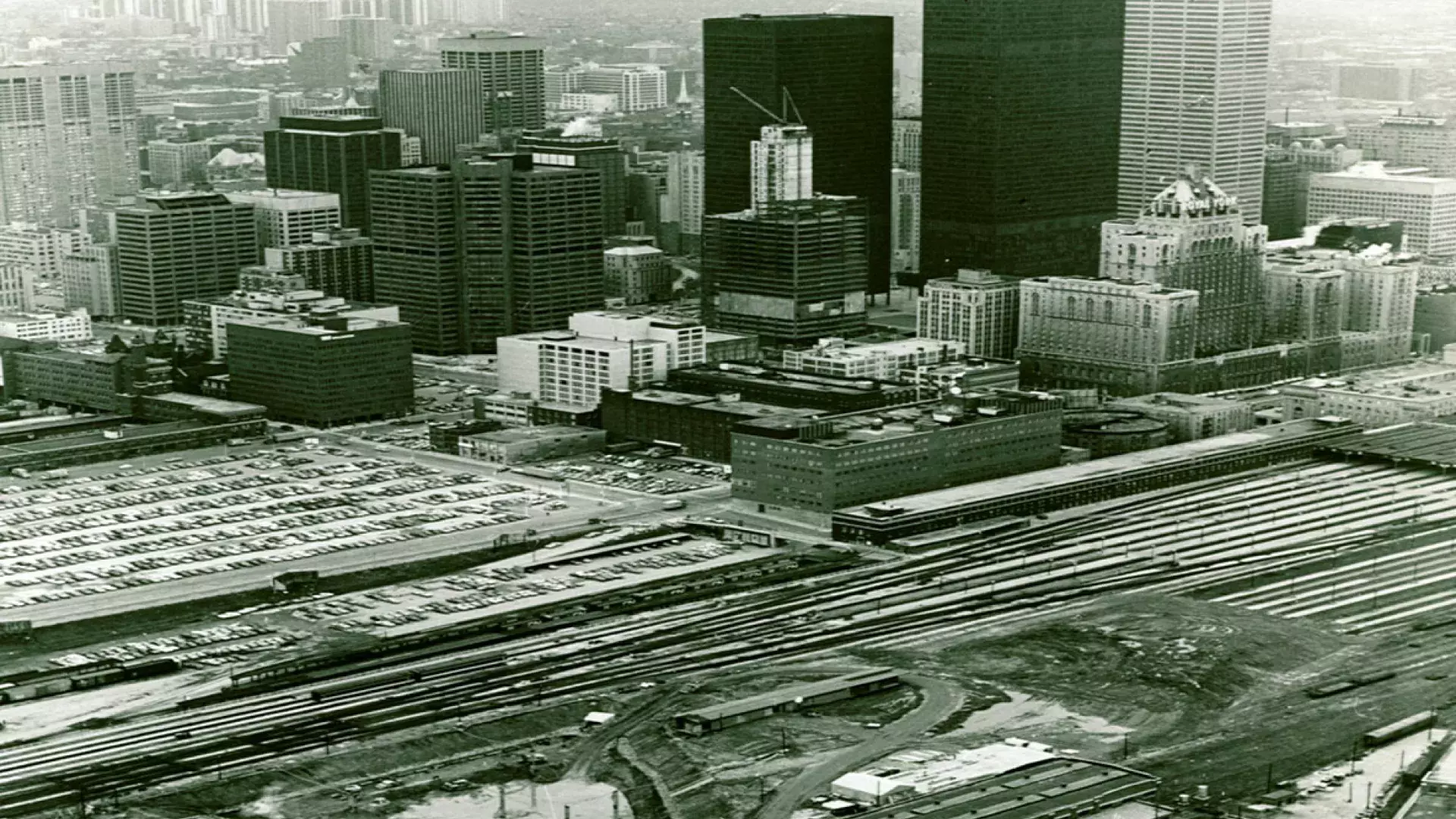
Tower construction crews moved in on February 6, 1973, and started to remove over 56 metric tonnes of earth and shale for the foundation. Once the foundation was ready, work began on the CN Tower’s 335-metre (1,100-foot) concrete shaft, a hexagonal core with three curved support arms.
To produce the CN Tower’s tapered contour, construction crews poured concrete into a massive mold known as a slipform. As the concrete hardened, the slipform, supported by a ring of climbing jacks powered by hydraulic pressure, moved upwards, gradually decreasing in size to impart the curve in Tower.
By February 1974, the Tower was already the tallest structure in Canada. In August 1974, work began on the seven-storey sphere that would eventually house the observation decks and the revolving 360 Restaurant.
The CN Tower approached completion in March 1975, when Olga, the giant Sikorsky helicopter, flew into the city to lift the 39 pieces of the antenna into place. The CN Tower was finished on April 2, 1975, opening to the public on June 26, 1976. At 553 metres (1,815 feet), it would remain the tallest freestanding structure in the world until surpassed by Dubai’s Burj Khalifa in 2009.
In 1995, Canadian National sold the CN Tower to the Canada Lands Company, a federal Crown corporation specializing in attractions of national interest. It was then that the tower truly became Canada’s National Tower—both in name and deed.
Today, the CN Tower is the centre of telecommunications for Toronto, serving more than 17 Canadian television and FM radio stations; we’re also the workplace of more than 500 people throughout the year, and—of course—an internationally renowned tourism destination, welcoming more than two million visitors each year.
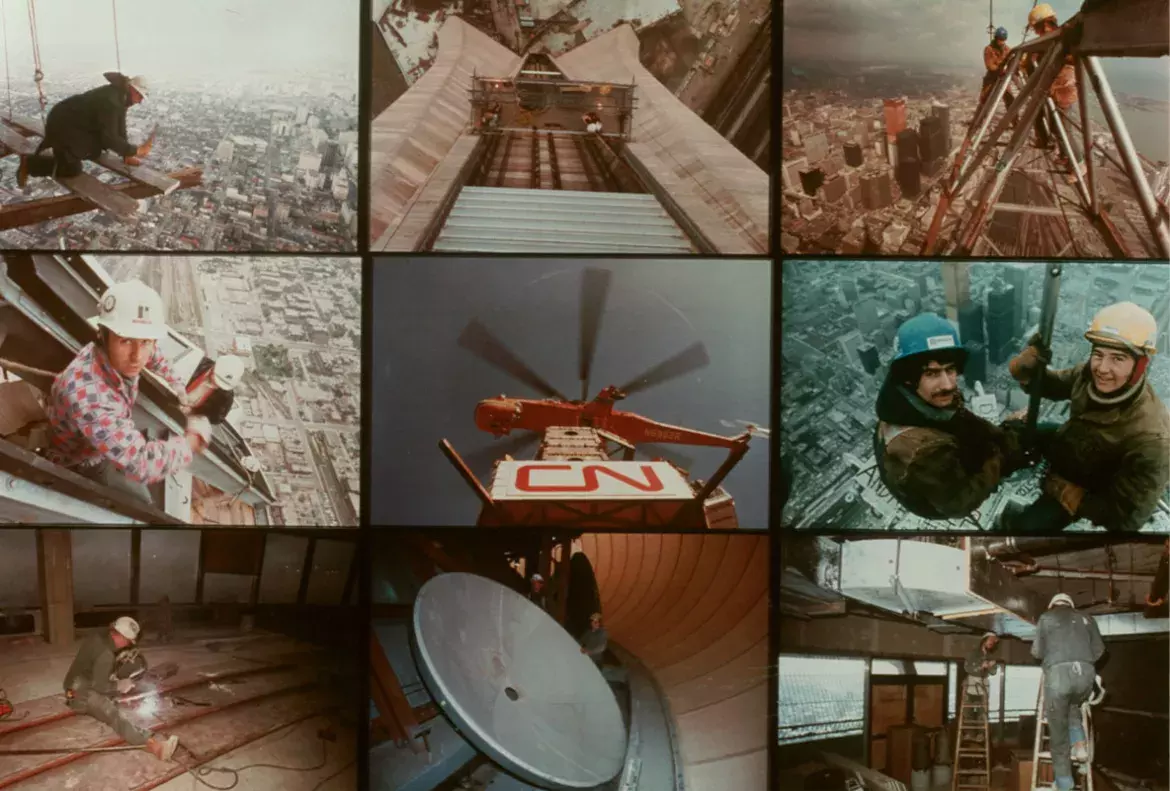
CN Tower construction crews, 1975
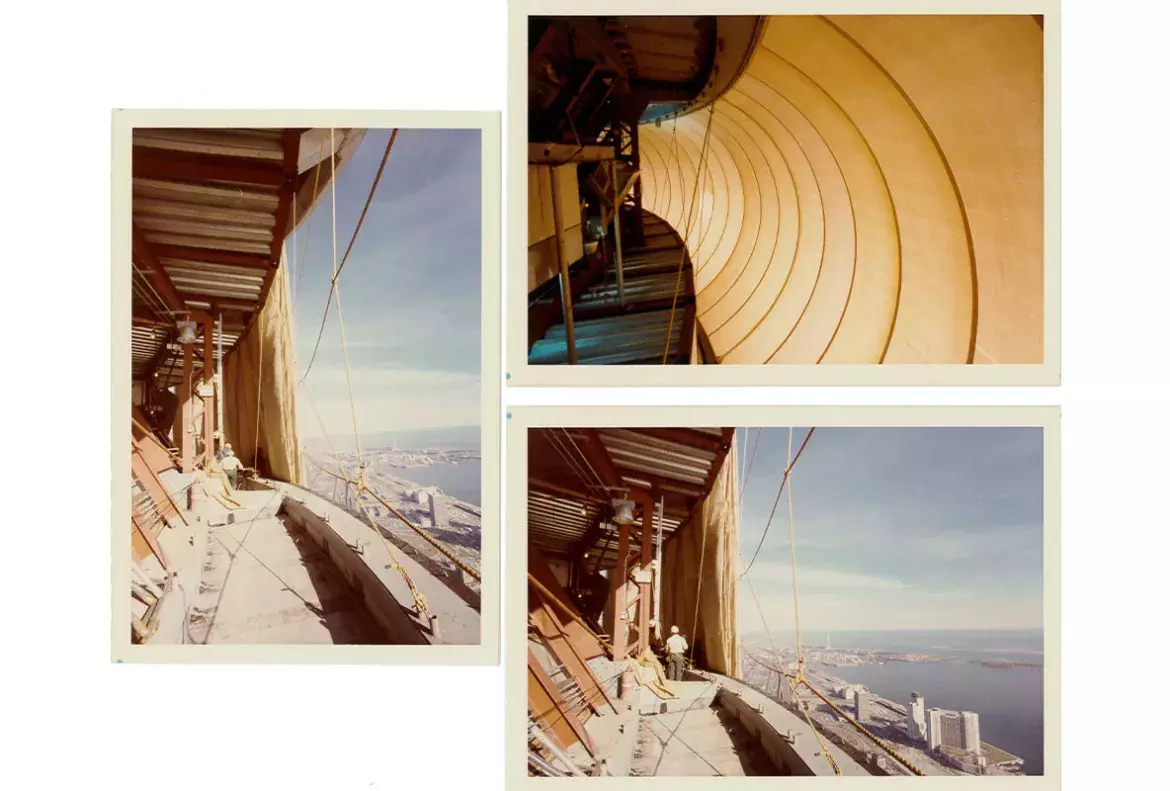
Main Observation Level, Radome installation, 1975
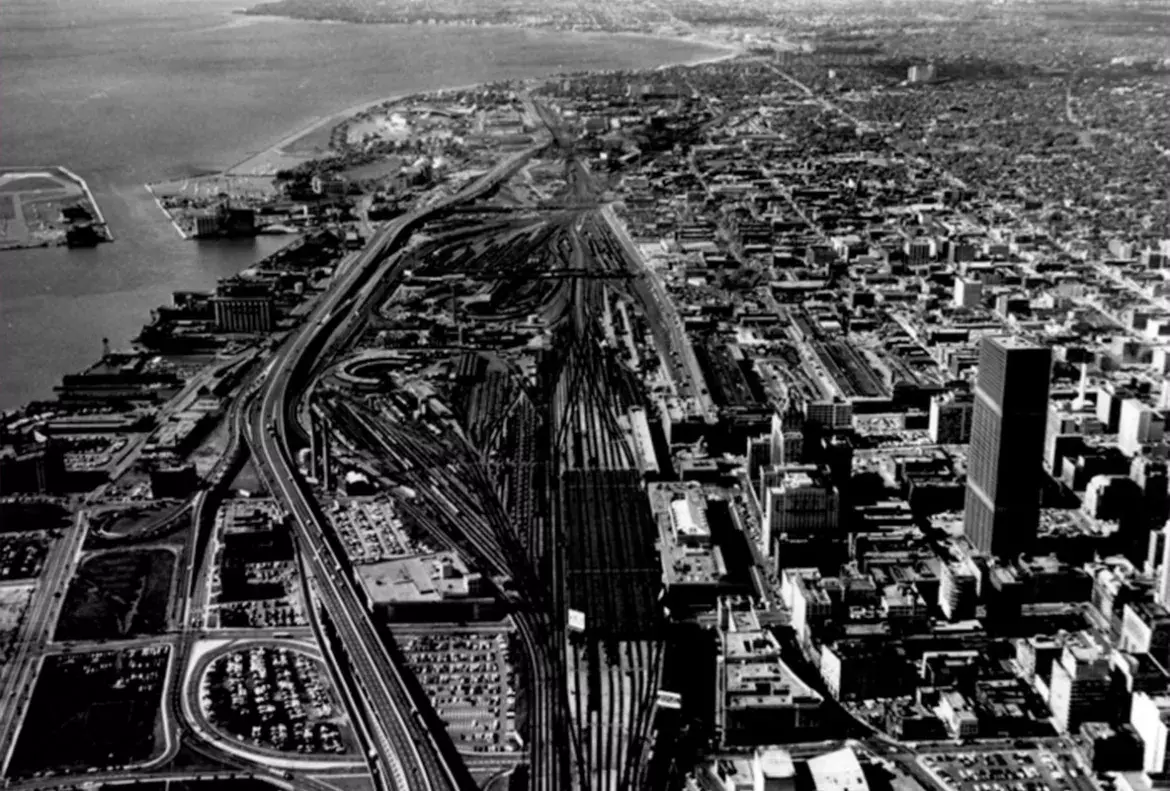
Transforming the city of Toronto, 1960s
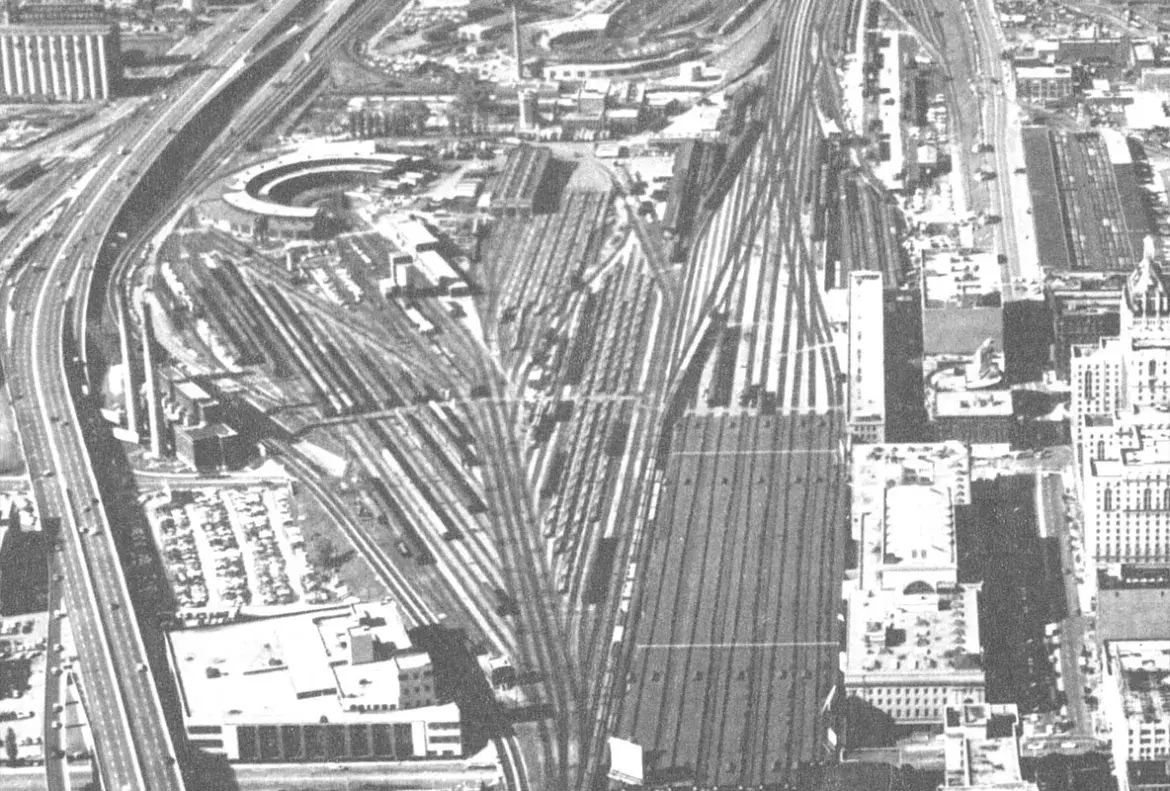
Toronto's Railway Lands, 1967
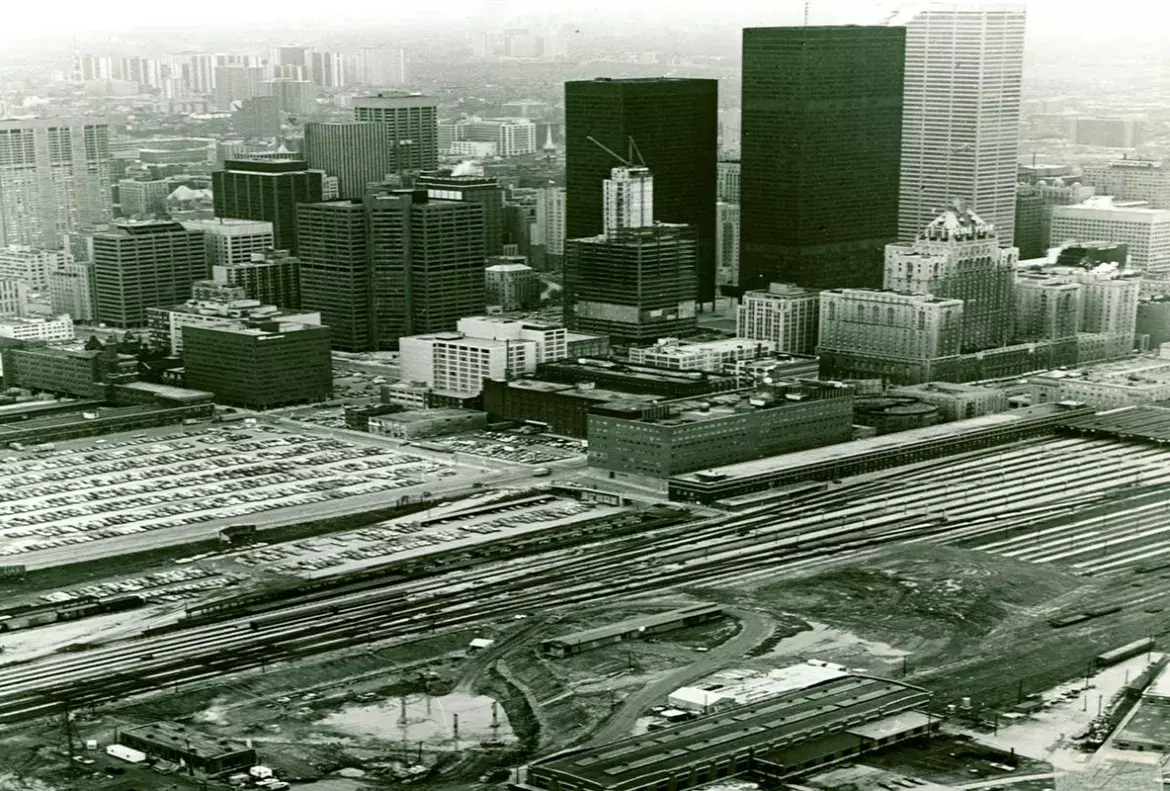
Preparing the foundation, 1973
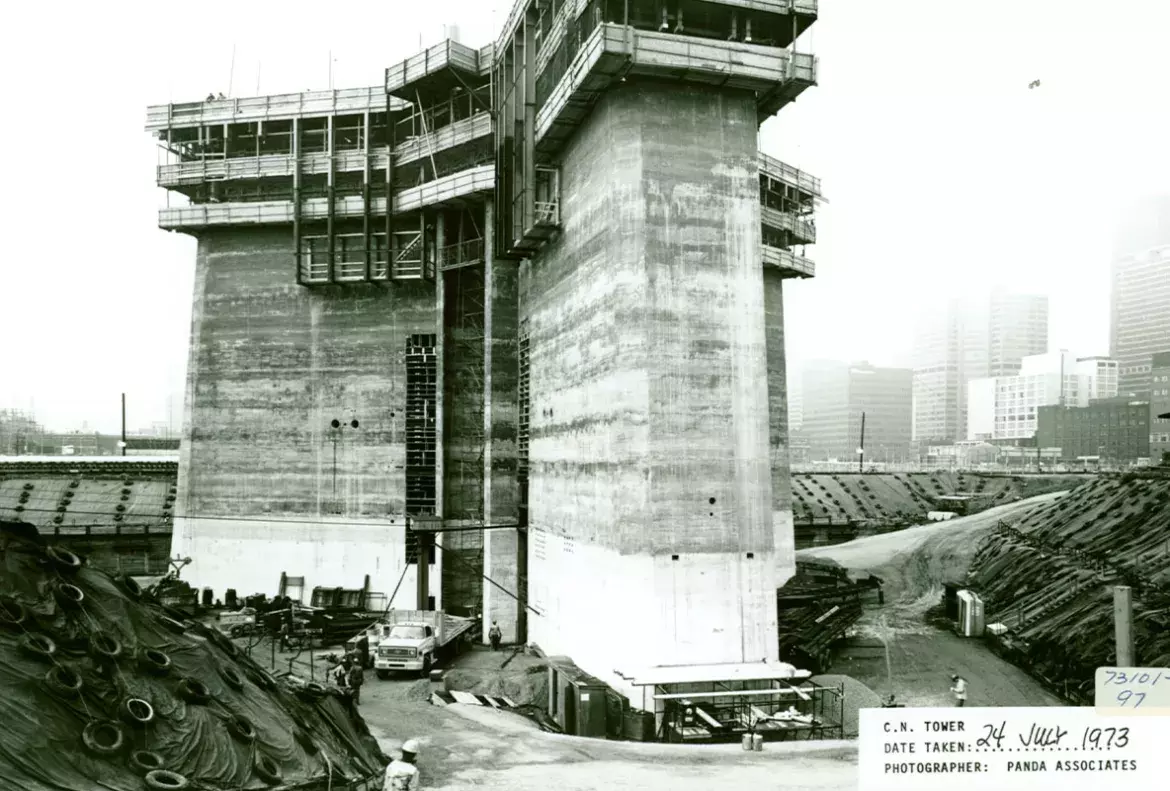
Construction of the base, 1973
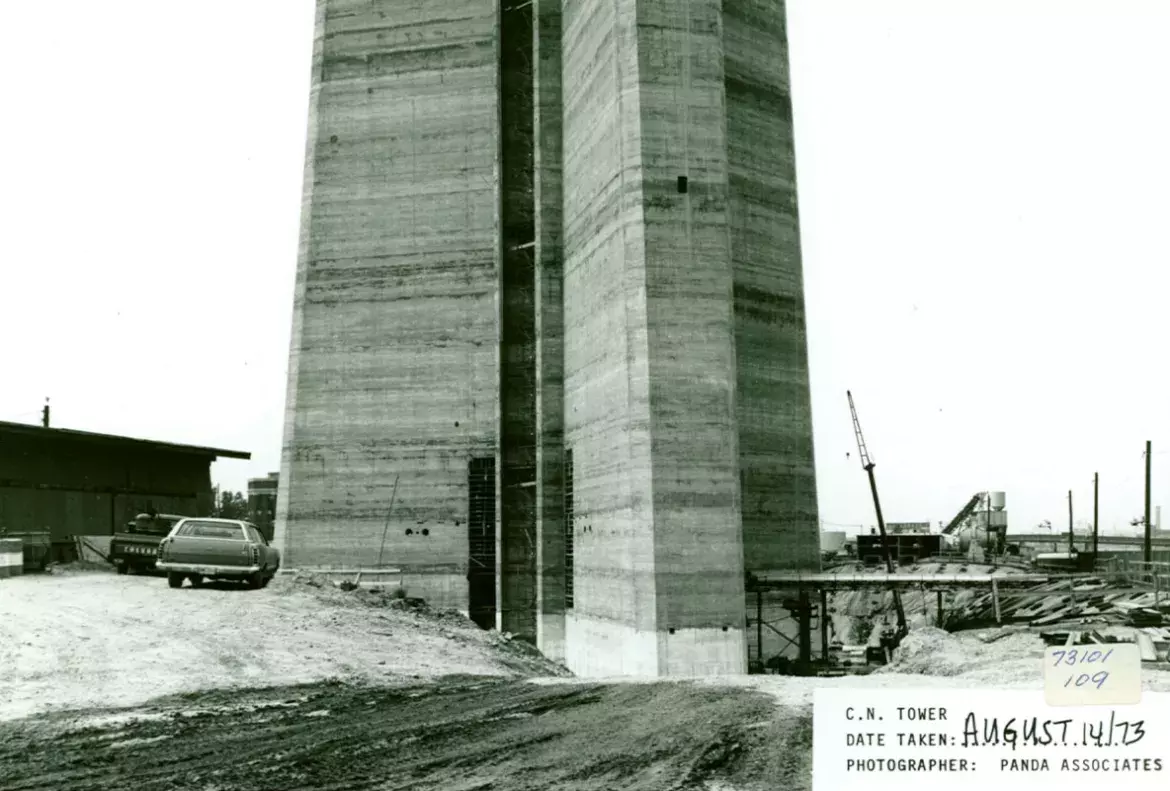
Building up the shaft, 1973
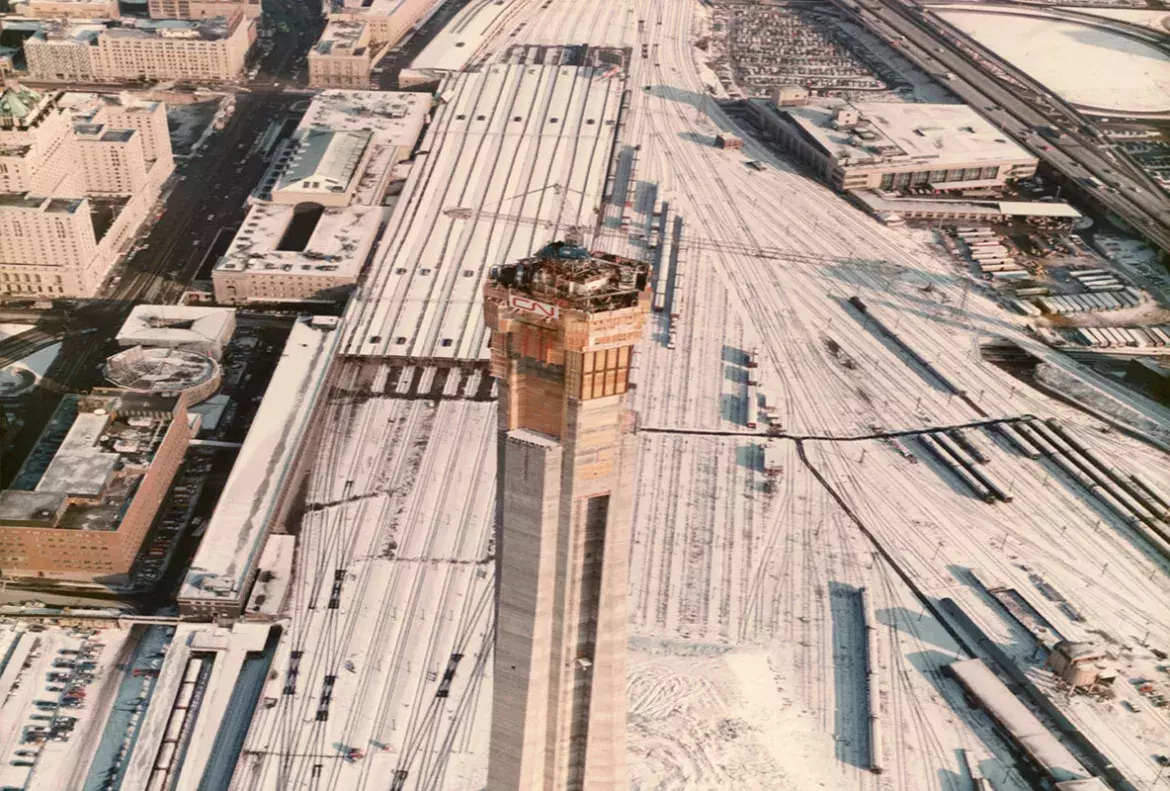
Construction continues through winter, 1973
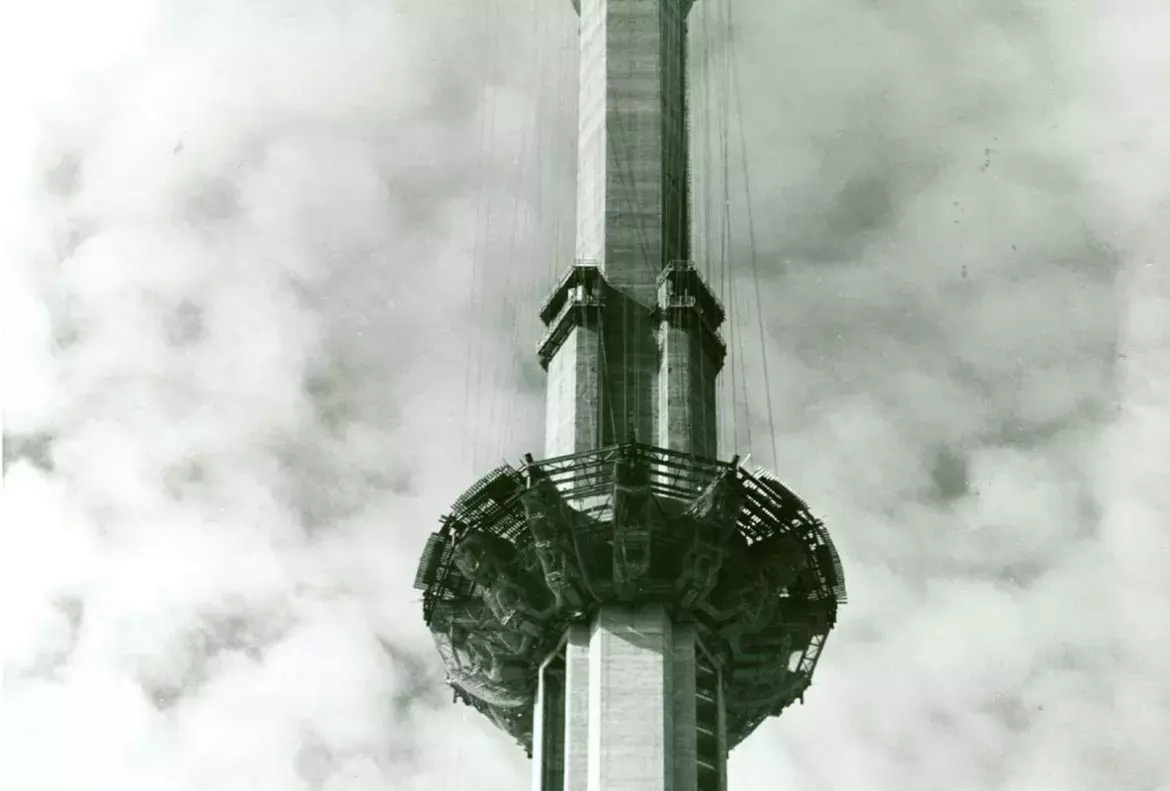
The beginnings of the main pod, 1974

The view from Olga, 1975
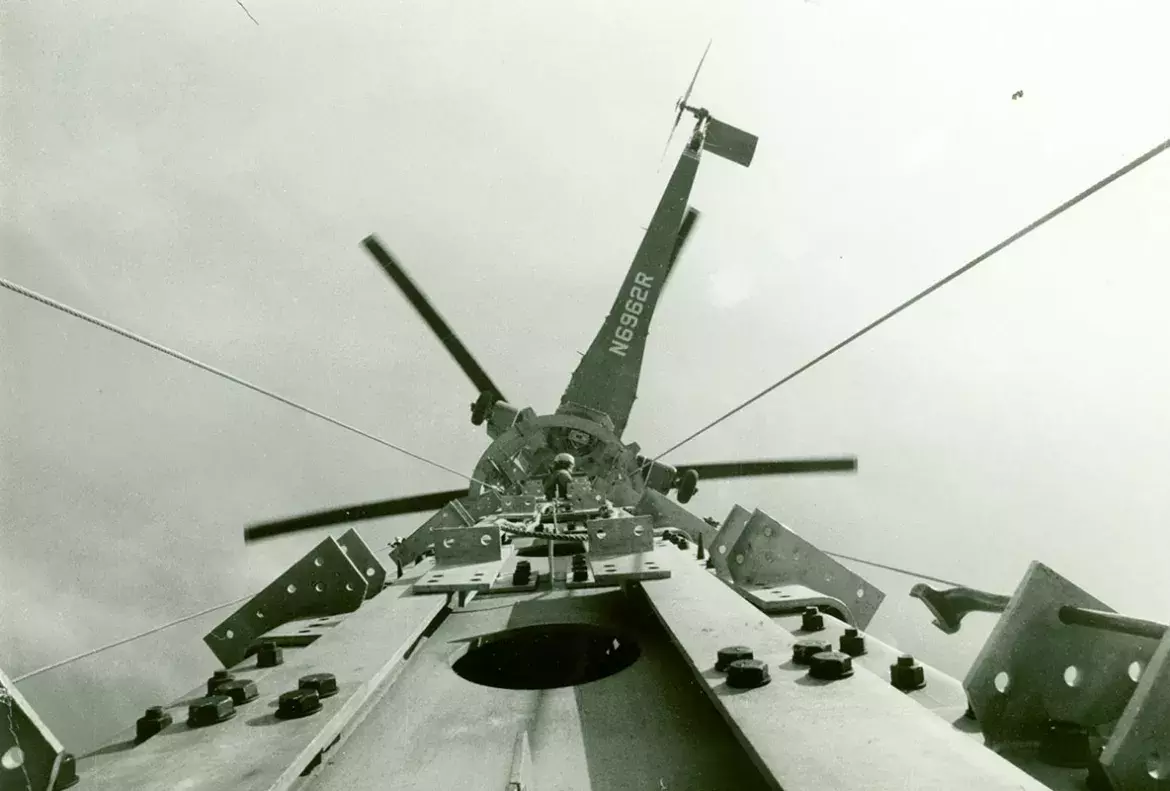
Olga hovers over the top, 1975
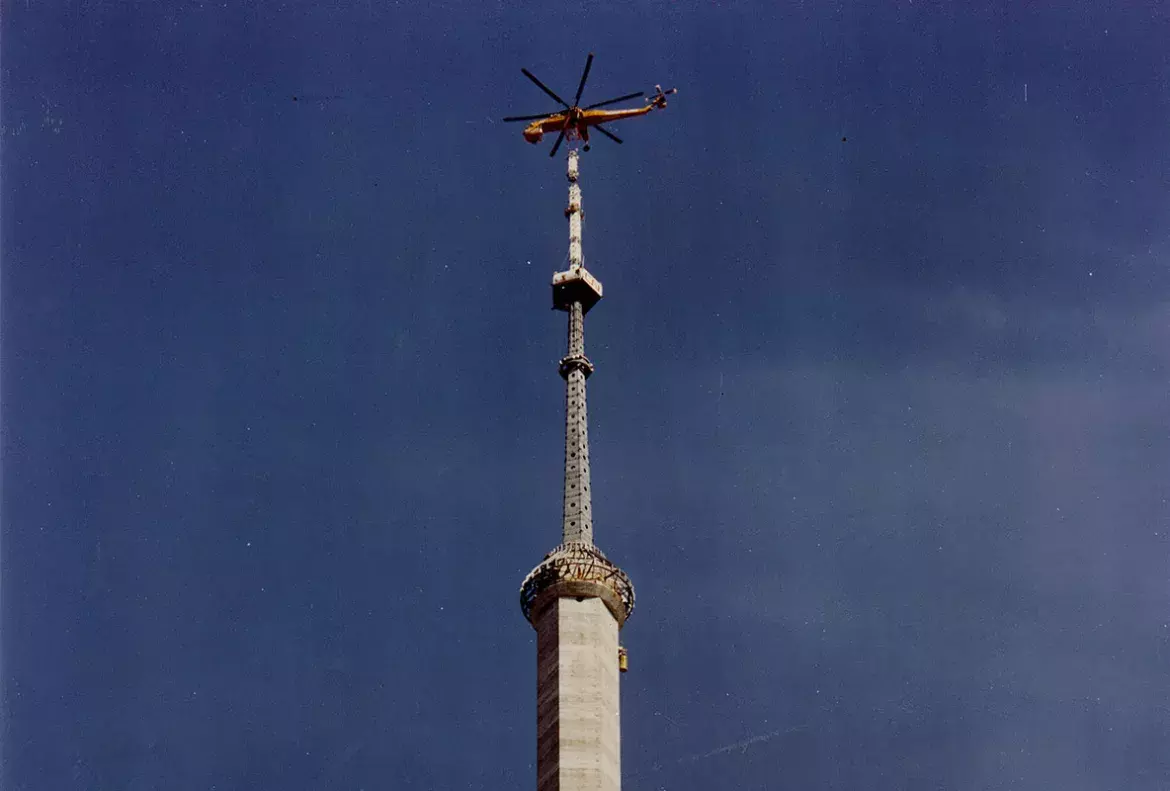
Topping the Tower, 1975
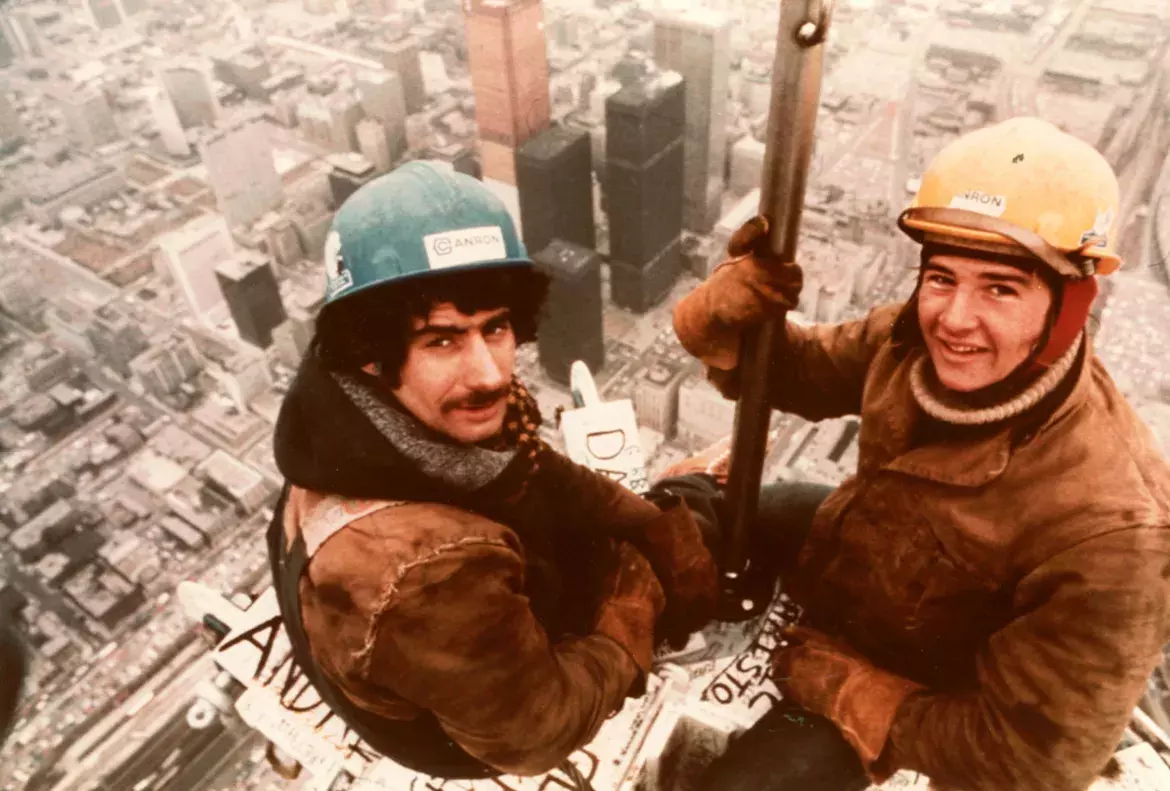
A job well done, 1975
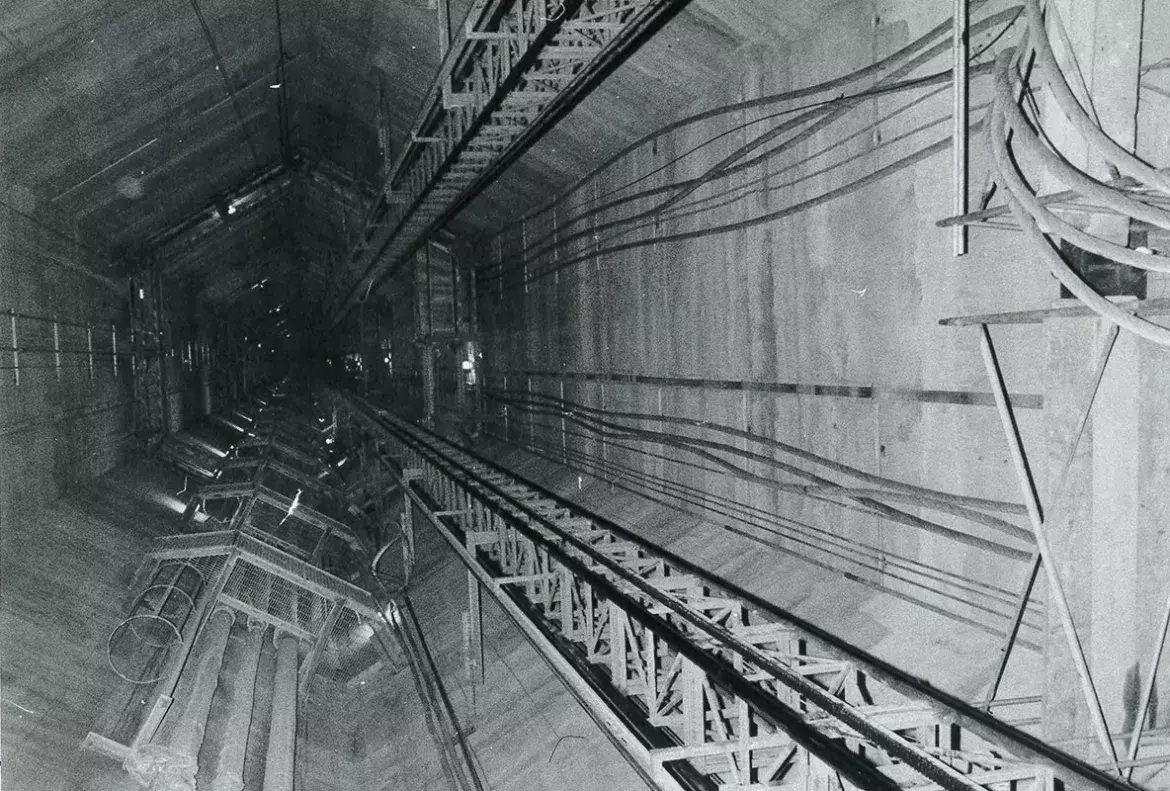
Inside the shaft, 1975

Canada's National Tower, 2018

Installation of the Radome, 1975

Certified by Guinness World Records